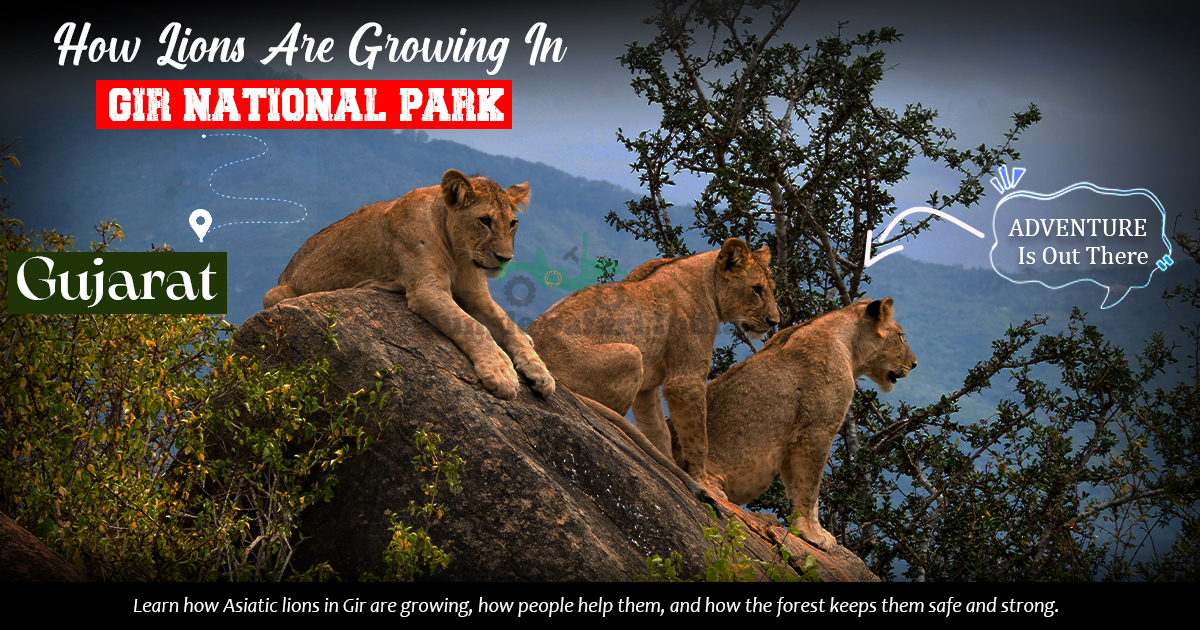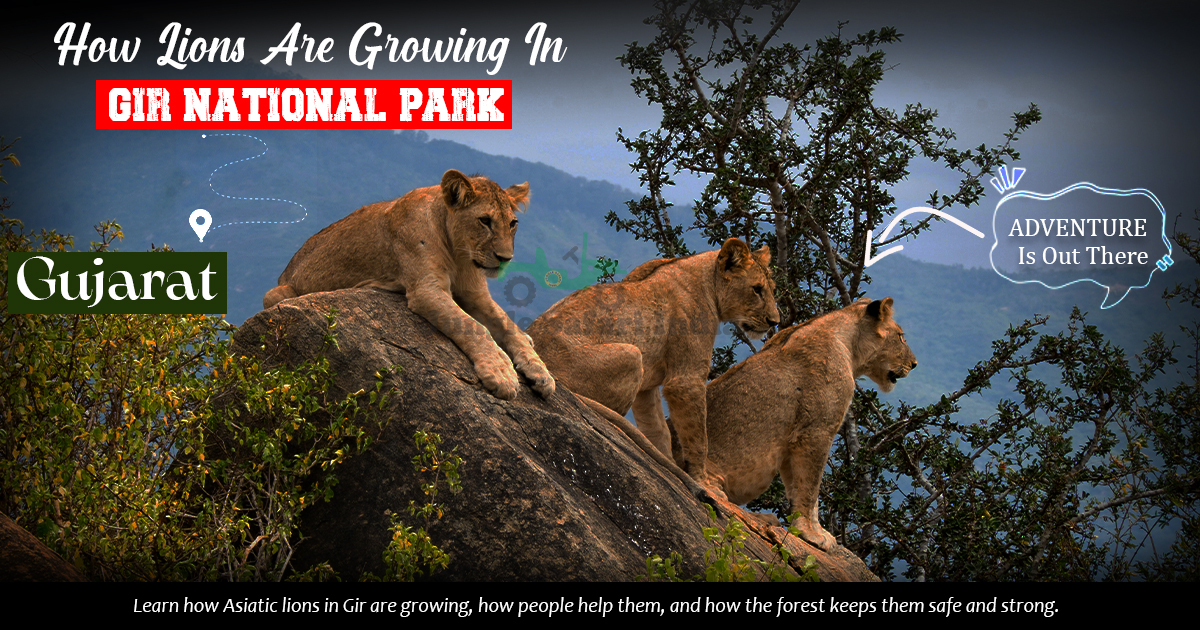How Lions Are Growing In Gir National Park
Gir National Park
Gir Lion Safari
- Author : Adeeb Sahil
- Date : June 12, 2025
Gir National Park is located in Gujarat, which is a western Indian state. The park contains dry forests, rolling hills, and thorny bushes. It is very unique in that it is the only habitat on earth where the Asiatic lion roams wild. These lions are different from African lions. Asiatic lions are smaller, their manes are shorter, and they have a fold of skin on their belly. About 100 years ago, these lions were almost gone. Very few were left in the forest.
Humans realized that these lions required assistance to survive. Therefore, the government and the natives began taking measures to save them. They used firm regulations to prevent hunting and conserve the forest. Due to these efforts, the lion population in Gir has gradually increased. Today, there are more lions living securely in the wild. This blog will discuss how these lions are developing in Gir National Park.
Lions In The Afternoon
In the afternoon, the weather in Gir National Park becomes very hot. During this time, the lions rest near water holes. These water holes are small places where water collects, and lions come here to cool down and drink water. Young lion cubs play in the water, splashing around and having fun. Adult lions rest quietly and drink water. Even when they are resting, they stay alert. These water spots are very important for their daily life, especially during the hot season. People who go on a Gir lion safari in the afternoon can often see lions resting near these water areas. It is one of the best times to observe their natural behavior.
Why the Asiatic Lion is Important
Asiatic lions are special because they are found only in Asia. Long ago, they lived in many places like the Middle East and northern parts of India. But people hunted them and destroyed their forests, so the number of lions became very low. By the early 1900s, only a few lions were left. They lived only in a small part of the Gir National Park. Today, they are alive because of strong actions taken to save them. Their story is one of great recovery, thanks to the help from governments, forest workers, and local people.
Beginning Of Lion Protection
The initiative to protect lions started back in 1911. During that period, the ruler of Junagadh, known as the Nawab, observed that lions were vanishing. Lord Curzon, who was a British officer, went to Junagadh and was given an offer to hunt lions. But he said no and explained to the Nawab that lions must be saved. This was the first time someone in India took a strong step to protect wild animals. This action started the idea of wildlife protection in India.
Lion Numbers Then And Now
The number of lions has grown a lot over the years. In 1910, only 19 lions were found in Gir. By 1990, that number had grown to 284 lions living in 300 square kilometers. The growth continued. In 2020, there were 674 lions counted. The next count will happen in May 2025. Experts believe that more than 800 lions will be found. This success is because of many years of protection, better forests, and public support.
Help For Lions
Gir National Park has shown improvement in its condition. In earlier times, there was the cutting of trees and poaching (illegal hunting). But now, the forest has grown back and poaching has almost stopped. Laws like the Wildlife Protection Act helped protect the lions. There are strong rules, and people who harm wildlife are punished. Both local people and forest officials have worked together to ensure the area remains safe.
This has made the forest a good place for lions to live and grow. Modern tools help keep lions safe. Lions are fitted with GPS collars. These collars show where the lion is and how it is moving. Forest staff use radio equipment to keep track of each lion. Cameras have been placed in many parts of the forest. These cameras send videos to forest officers. This helps them know if a lion is in danger. Sometimes, lions fall into open wells. Now, special rescue teams can reach fast and save the lions in time.
Tourism And Income
Gir National Park is not only a place for lions, but also a popular place for visitors. Every year, about 8 lakh people come to see the lions. Many visitors are thrilled to spot lions in the wild, particularly during a Gir lion safari. This tourism brings a lot of money. Around ₹11 crore is earned every year. The park gets improved with the help of this money. It is spent on better roads, more staff training, and good treatment for sick or injured lions.
Problems That Still Exist
Even though the number of lions is going up, some problems still remain. Every year, about 120 lions die. Most of these deaths happen because of natural reasons like old age, fights, or sickness. Some accidents also happen. But now, because of better care and faster rescue, more lions can be saved. Lions are checked regularly for sickness. Forest teams also make sure lions stay safe in areas near people. Even with these efforts, some lion deaths cannot be avoided.
Help From Local People
Local people have helped a lot in saving the lions. One such group is the Maldhari community. They are traditional animal herders who have lived in Gir for a long time. These people live close to lions and do not harm them. In fact, they help forest officials by giving information. If they see an injured lion or any danger, they report it quickly. Their support is very important for lion safety.
Lion Count 2025
The next lion count will take place from 10 to 13 May 2025. This time, more advanced tools will be used. Drones will fly over forests to find lions. Trained workers will move through forests and nearby areas to count lions properly. This time, the counting process will be more correct and faster. Experts think that the number of lions will cross 800. This shows that more than 100 years of protection and care have worked.






(0) Comments: